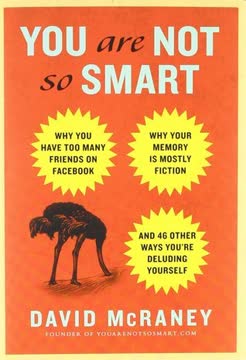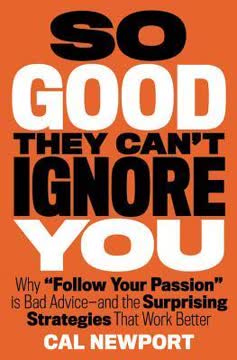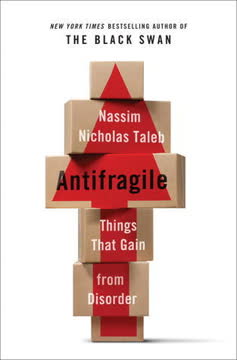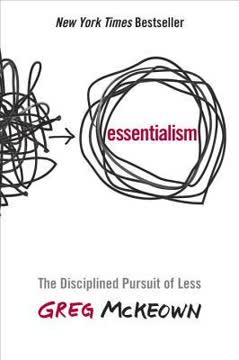Key Takeaways
1. Critical Thinking Begins with Metacognition and Self-Awareness
Having awareness of how your thoughts work is the first step toward developing critical thinking skills.
Thinking about thinking. Metacognition, or thinking about your thought processes, is the foundation of critical thinking. It involves examining your beliefs, assumptions, and biases to understand how they influence your decisions. This self-awareness allows you to identify flaws in your reasoning and make more informed choices.
Questioning assumptions. Critical thinking requires questioning everything, even deeply held beliefs. This doesn't mean rejecting everything outright, but rather examining the evidence and logic behind your assumptions. Are they based on facts, emotions, or biases? Are there alternative perspectives to consider?
Independent thinking. By developing critical thinking skills, you become an independent thinker capable of making your own choices thoughtfully. This involves understanding logic, deconstructing arguments, identifying flaws, and examining the reasoning behind your beliefs.
2. Neurological Biases Influence Beliefs and Perceptions
Our brains are neurologically wired to base our beliefs on what we want to believe, because these are emotional responses.
Triune brain model. Our brains operate on three levels: the reptilian brain (instincts), the primate brain (emotions), and the human brain (reason). The older, more primitive parts of our brain often override rational thought processes, leading to biased decision-making.
Emotional responses. Emotional responses, while useful for survival in the past, can cloud rational thought in the modern world. Understanding how emotions influence our beliefs and perceptions is crucial for mitigating their effects.
Need for control. Humans have a deep psychological need for control, which can manifest in superstitions and other irrational beliefs. This need can also lead to confirmation bias, where we seek out information that confirms our existing beliefs and ignore contradictory evidence.
3. Memory is Constructed, Not Recorded
Our brain is responsible for constructing our memories, and therefore our memories are not necessarily a reflection of reality.
Memory flaws. Memories are not perfect recordings of events, but rather reconstructions influenced by our beliefs, biases, and emotions. This means that our memories are often unreliable and subject to errors.
Types of memory errors:
- Source amnesia: Forgetting where you learned something
- Truth amnesia: Remembering a statement more than whether it's true
- Memory contamination: Filling in gaps with altered or incorrect details
Open-ended questions. When gathering information from others, use open-ended questions to elicit more accurate accounts. Avoid leading questions that can contaminate their memories and introduce bias.
4. Reality is a Brain-Built Illusion
Like memory and perception, reality is also something built in the brain.
Brain's construction of reality. The brain actively constructs our reality by filtering and interpreting incoming sensory data. This process involves conflict between different parts of the brain, which can lead to suboptimal choices.
Subconscious decision-making. Our brains often make decisions subconsciously, before we are even aware of them. This highlights the importance of understanding our biases and how they influence our choices.
Altered states of consciousness. Altered states of consciousness, such as those induced by drugs or hypnosis, can reveal how different parts of the brain operate at different times. This can provide insights into the nature of consciousness and decision-making.
5. Arguments Require Sound Premises and Valid Logic
When we construct arguments, we start with specific premises, from which we derive a conclusion.
Premises and conclusions. Arguments are built on premises, which are statements taken as given. A valid argument is one where the conclusion follows logically from the premises. A sound argument is one where the premises are true and the logic is valid.
Logical fallacies. Logical fallacies are flaws in reasoning that can lead to incorrect conclusions. Common fallacies include:
- Arguments from authority: Believing something is true simply because someone in charge says so
- Post hoc ergo propter hoc: Assuming that because X happened after Y, Y caused X
- Ad hominem: Attacking the person making the argument instead of the argument itself
Reasoning vs. rationalizing. Reasoning involves gathering evidence and observations to reach a conclusion, while rationalizing involves starting with a conclusion and then finding arguments to justify it. Critical thinking requires reasoning, not rationalizing.
6. Marketing and Media Exploit Cognitive Biases
There is a whole industry built on exploiting people's brain chemistry, cognition, and biases to get them to buy things: marketing.
Internet democratization. The Internet has democratized information access, but it has also led to the spread of misinformation and biased content. Critical thinking skills are essential for navigating this environment.
Marketing strategies. Marketers exploit cognitive biases, such as the left-digit effect and the anchoring heuristic, to influence consumer behavior. They also create problems for consumers to worry about and then offer their products as solutions.
Multi-level marketing (MLMs). MLMs are pyramid schemes disguised as legitimate businesses. They rely on recruiting salespeople who then have to recruit more salespeople to make a profit. Most MLM participants lose money.
7. Conspiracy Theories Fulfill Psychological Needs
People love the idea that broad organizations are what is keeping them from achieving their goals, instead of their own flaws and mistakes.
Grand conspiracies. Grand conspiracy theories involve large organizations or governments working together over long periods. They often involve anti-Semitic tropes and rely on misinterpreting symbols.
Psychological appeal. Conspiracy theories fulfill psychological needs for control, certainty, and belonging. They also provide a sense of self-esteem and a conduit for emotions like anger and despair.
Cognitive errors. Conspiracy theorists often exhibit cognitive errors such as confirmation bias, fundamental attribution error, and false dichotomy. They also tend to move the goalposts and shift the burden of proof.
Last updated:
FAQ
1. What is "Neuroscience and Critical Thinking" by Albert Rutherford about?
- Explores the intersection: The book examines how neuroscience and critical thinking intersect, focusing on how our brains shape thought patterns, memory, decision-making, and susceptibility to errors.
- Practical application: It provides readers with tools to improve memory, make rational decisions, reduce emotional reactions, and set realistic expectations.
- Addresses modern challenges: The book discusses how to navigate misinformation, marketing tactics, and conspiracy theories in today’s information-rich world.
- Focus on self-awareness: Emphasizes the importance of metacognition—thinking about your own thinking—to develop stronger critical thinking skills.
2. Why should I read "Neuroscience and Critical Thinking" by Albert Rutherford?
- Understand your brain: The book helps readers understand the neurological basis of their beliefs, perceptions, and decision-making processes.
- Combat cognitive errors: It offers strategies to recognize and overcome common thinking errors, biases, and logical fallacies.
- Navigate information overload: Provides practical advice for evaluating information in an era of constant media, marketing, and online misinformation.
- Personal and societal benefits: Learning these skills can improve personal decision-making and contribute to more rational, evidence-based discussions in society.
3. What are the key takeaways from "Neuroscience and Critical Thinking"?
- Critical thinking is learned: Critical thinking is not innate; it requires conscious effort, self-awareness, and practice.
- Biases are natural but manageable: Our brains are wired for certain biases and emotional responses, but understanding them allows us to mitigate their effects.
- Memory is unreliable: Human memory is constructed, malleable, and often inaccurate, so relying solely on memory can lead to errors.
- Logical reasoning matters: Recognizing and avoiding logical fallacies is essential for sound decision-making and argumentation.
- Skepticism is healthy: Scientific skepticism and evidence-based reasoning are crucial tools for discerning truth from misinformation.
4. How does Albert Rutherford define and explain critical thinking in the book?
- Metacognition at the core: Critical thinking is described as metacognition—being aware of and analyzing your own thought processes.
- Beyond memorization: It’s not about knowing facts, but about understanding how you know things and evaluating the reasoning behind beliefs.
- Skills involved: Includes deconstructing arguments, identifying logical flaws, constructing step-by-step solutions, and being open to revising beliefs.
- Not just criticism: Critical thinking is about engaging in calm, reasoned debate, not simply being critical or argumentative.
5. What does "Neuroscience and Critical Thinking" say about how the brain influences our beliefs and perceptions?
- Triune brain model: The book explains the "triune brain" (reptilian, primate, and human/neocortex) and how each part influences emotions, instincts, and rational thought.
- Emotional bias: Emotional responses, rooted in older brain structures, often guide beliefs and can override rational analysis.
- Need for control and meaning: Human brains seek control, meaning, and simple explanations, which can lead to superstitions, confirmation bias, and oversimplification.
- Social and moral instincts: Our need for social belonging and moral codes also shapes our perceptions and can introduce critical thinking errors.
6. How does the book describe the relationship between memory and critical thinking?
- Memory is constructed: Memories are not perfect recordings; they are reconstructed and influenced by biases, emotions, and new information.
- Types of memory: Differentiates between short-term, long-term, emotional, and detail memory, each with its own strengths and weaknesses.
- Memory errors: Discusses phenomena like source amnesia, truth amnesia, and the illusory truth effect, which can lead to false beliefs.
- Critical thinking as a corrective: Emphasizes the need to corroborate memories with evidence and logical reasoning, especially in high-stakes situations.
7. What are the main logical fallacies and cognitive errors discussed in "Neuroscience and Critical Thinking"?
- Common fallacies covered: Includes arguments from authority, post hoc ergo propter hoc, ad hoc reasoning, ad hominem, argumentum ad ignorantiam, false dichotomy, moving the goalpost, and strawman fallacy.
- Why they occur: Many fallacies arise from natural cognitive tendencies, such as the desire for simplicity, validation, or group belonging.
- Impact on reasoning: These errors can undermine arguments, lead to poor decisions, and make individuals susceptible to manipulation.
- How to avoid them: The book provides strategies for identifying and countering these fallacies in everyday thinking and debate.
8. How does "Neuroscience and Critical Thinking" address the influence of marketing, media, and misinformation?
- Manipulation tactics: Explains how marketers exploit cognitive biases (e.g., left-digit effect, impulse buying, anchoring) to influence consumer behavior.
- Media literacy: Stresses the importance of evaluating sources, recognizing emotional or biased language, and seeking consensus among reputable experts.
- Misinformation examples: Analyzes urban legends, spam emails, and viral hoaxes to illustrate how misinformation spreads and how to critically assess such claims.
- MLMs and scams: Details how multi-level marketing schemes and scams use psychological manipulation and social proof to deceive people.
9. What does Albert Rutherford recommend for improving critical thinking skills in daily life?
- Practice metacognition: Regularly reflect on your own thought processes, biases, and the sources of your beliefs.
- Seek diverse perspectives: Engage in discussions with others, especially those who challenge your views, to uncover blind spots.
- Use evidence-based reasoning: Prioritize objective evidence over gut feelings, anecdotes, or wishful thinking.
- Be open to change: Cultivate self-awareness and a willingness to revise beliefs when presented with well-reasoned arguments or new data.
10. How does "Neuroscience and Critical Thinking" explain the appeal and dangers of conspiracy theories?
- Psychological needs: Conspiracy theories fulfill needs for control, certainty, and belonging, especially in uncertain times.
- Pattern recognition gone awry: Humans are wired to see patterns, which can lead to seeing connections where none exist.
- Cognitive traps: Confirmation bias, fundamental attribution error, and closed belief systems make conspiracy theories resistant to evidence.
- Societal impact: While some conspiracy theories have uncovered real issues, most undermine trust, promote misinformation, and discourage healthy skepticism.
11. What practical methods does the book suggest for evaluating information and sources?
- Check multiple sources: Always verify information across independent, reputable, and fact-checked outlets.
- Assess source quality: Look for professional management, lack of emotional or sales-driven language, and transparency about biases.
- Consensus matters: Give more weight to information supported by a consensus among experts in the field.
- Investigate opposing views: Research arguments from different perspectives to better understand the landscape and avoid echo chambers.
12. What are the best quotes from "Neuroscience and Critical Thinking" by Albert Rutherford and what do they mean?
- "The brain is an amazing organ. Not only can it think, it can also think about how it thinks."
- Highlights the concept of metacognition, which is central to developing critical thinking skills.
- "Critical thinkers focus more on how they know than what they know."
- Emphasizes the importance of process and reasoning over mere accumulation of facts.
- "Wishful thinking can be especially harmful to our critical thinking because it guides us to the conclusions we want instead of the correct ones."
- Warns against letting emotions and desires override objective analysis.
- "Critical thinking cannot happen in a vacuum. Other people can offer perspectives that you have never even considered, and they can find holes in your logic that you missed completely."
- Stresses the value of dialogue and openness to feedback in refining one’s thinking.
- "Healthy skepticism is the most important tool you can use when dealing with conspiracy theories; it is excellent at filtering out what is false or implausible from what is true."
- Advocates for a balanced, evidence-based approach to evaluating extraordinary claims.
Review Summary
Neuroscience and Critical Thinking receives mixed reviews, with an average rating of 3.51. Readers appreciate its simplicity and accessibility, particularly for high school students or adults seeking a basic understanding. Some find it informative and well-researched, praising its concise approach to critical thinking and neuroscience. However, others criticize its shallow treatment of neuroscientific aspects and oversimplification. The book is commended for discussing logical fallacies and decision-making processes, but some reviewers note factual errors and a lack of depth in certain areas.
Similar Books










Download PDF
Download EPUB
.epub digital book format is ideal for reading ebooks on phones, tablets, and e-readers.









